NIKE Vaporfly 4
The NIKE Vaporfly 4 is a shoe born purely for speed. It’s the evolution of the original 4%—softer, lighter, more responsive, and overall more efficient. Better suited for short-distance racing (up to 21K). This is its definition. ⚡️
In short: The NIKE Vaporfly 4 is a pure racer that feels friendlier underfoot, not overly aggressive (noticeably less aggressive than Vaporfly Next% 1 and 2). While it doesn’t feature a pronounced rocker, the overall updates make it better in almost every way—comfort, nimbleness, responsiveness, and performance. It still delivers solid stability and grip.
The only real drawback is durability, which I consider a major issue. It’s still as short-lived as versions 1 and 2, unlike newer super shoes which tend to be more durable. (Many runners here train in their super shoes too, so I’m not sure if this model will be as popular as other brands.)
Vaporfly 4 has been tuned to perform better in races up to 21K, not the full marathon, with a 5mm drop in stack height (from 40mm to 35mm).
The Turning Point:
Back when the Vaporfly 4% launched in 2017, it revolutionized the running shoe game with “light, soft, bouncy, and faster than anything before.” Even with newer models out, Vaporfly remains a go-to for many marathoners. At some races, you’ll still see more Vaporflys than Alphaflys—even though the Alphafly was designed specifically for the marathon.
The problem is Nike has two models overlapping roles, so they needed to clarify their use cases. Alphafly 3 is now lighter, more snug, and more bouncy—making it the shoe of choice for marathon champs like Kelvin Kiptum and Sifan Hassan.
Originally, Vaporfly was positioned as an all-distance race shoe—from 1 mile to marathon. But the major shift in this new version is that Vaporfly 4 comes with a thinner sole and faster response. While it still feels soft, the support might not be enough for runners who need help battling fatigue over a 3–4 hour marathon.
I’m not sure if this is the right move. Many people still dislike the Alphafly, so where does that leave them for the marathon? Vaporfly 4 might be too thin for the average runner to go 42K in. Most competitors are going the soft-max route—but Nike is going the opposite direction, making the sole thinner…
I don’t think the modern runners (the soft-max generation) will love this. Personally, I wish Vaporfly 4 could still be a full-distance option (would love if it kept the same stack height and durability as the 3—that could’ve made it the ultimate race shoe for many runners).
For me, when it comes to the marathon, I might look elsewhere (and not necessarily Alphafly 3—maybe another brand altogether). But for anything from 5K to 21K, especially the 10K—which I think suits it best—NIKE Vaporfly 4 is my top pick (based on tests against other shoes so far—haven’t compared to the latest models yet).
Vaporfly 4 Rundown:
Design:
Sleek and clean, with a silhouette similar to the Alphafly 3 minus the Air Pods. Feels like a mix between the original 4% platform and the Vaporfly Next% 2 upper. One nitpick: way too many Proto colorways flooding the market 😂
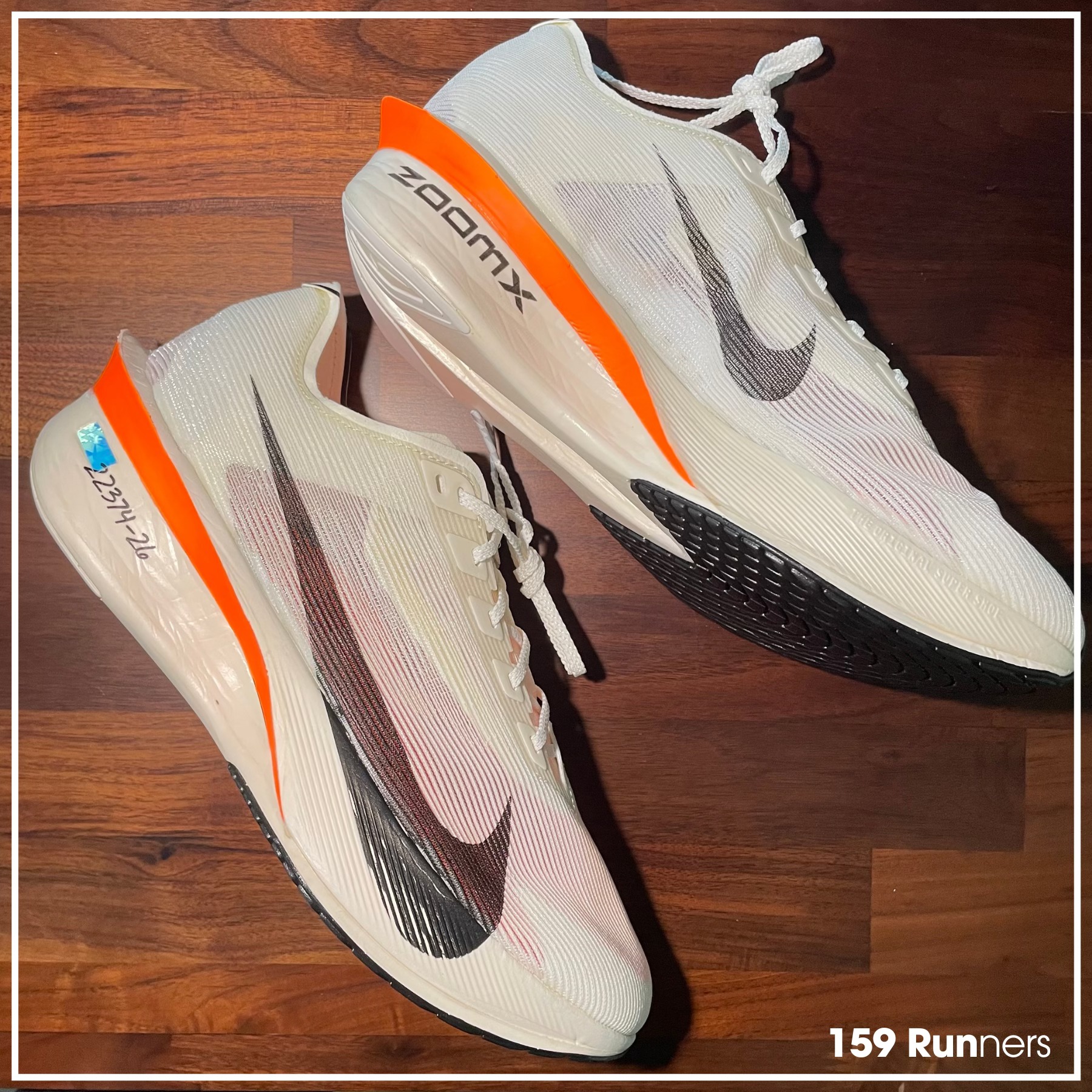
Upper:
New upper is soft, flexible, and provides a snug fit (leans on the tighter side—possibly because I have slightly wide feet). Feels similar to Next% 2’s upper but thinner and more comfortable. Not as rough as the 2. I like it overall (though I prefer the Streakfly 2 upper—thinner, more breathable, easier on/off).
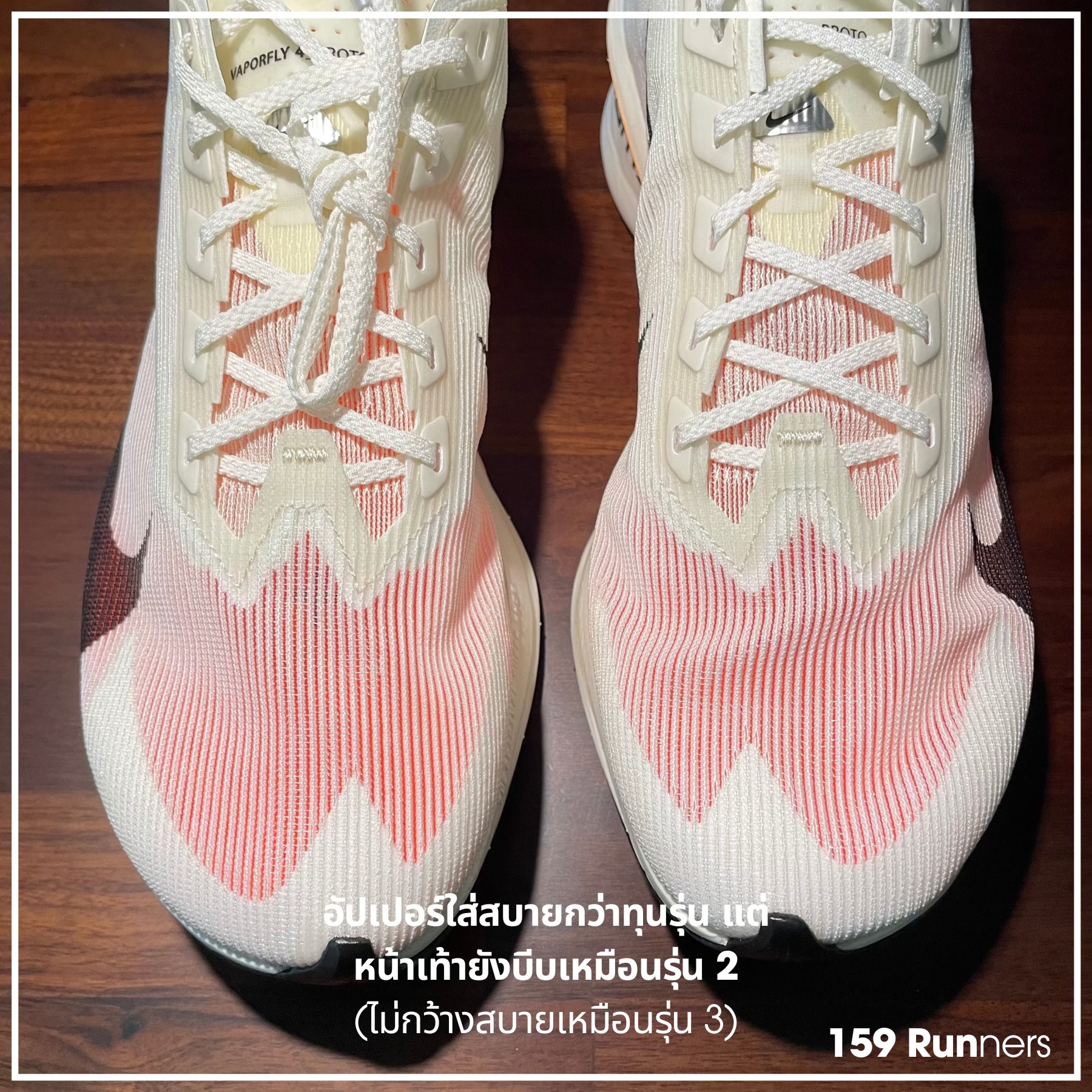
Heel cup:
Two small gripes—not deal-breakers though. Despite the heel padding similar to previous models, the shoe doesn’t lock the heel in securely—there’s noticeable movement during runs unless the laces are pulled tight. Also, the tiny heel tab is almost useless—just for looks. I still have to dig my finger in to pull them on.
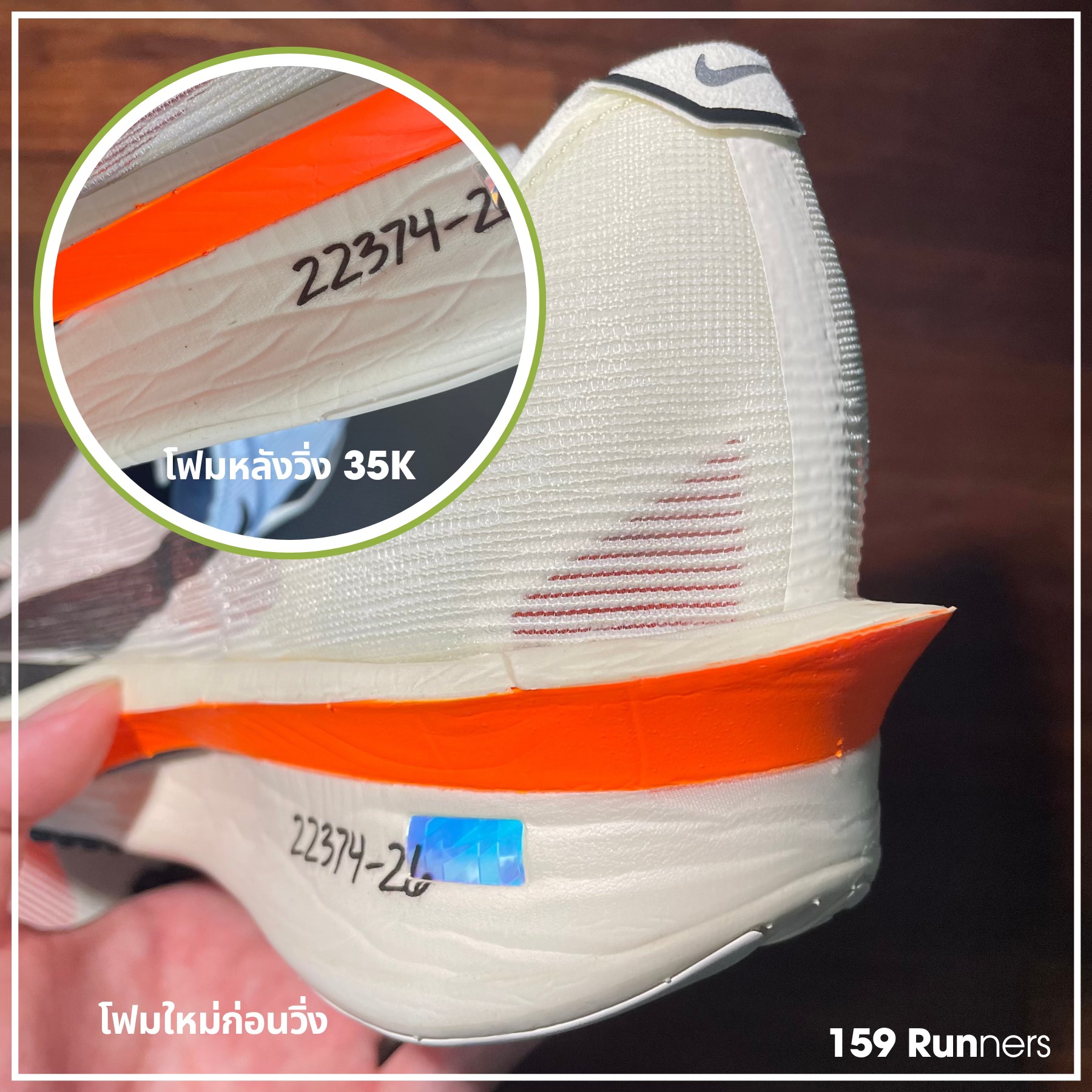
Tongue:
Solid design. The tongue stays flat without bunching and doesn’t press down on the top of the foot, and ventilation is great—more than half the tongue is made from breathable upper mesh. Easy to lace up and slip on.
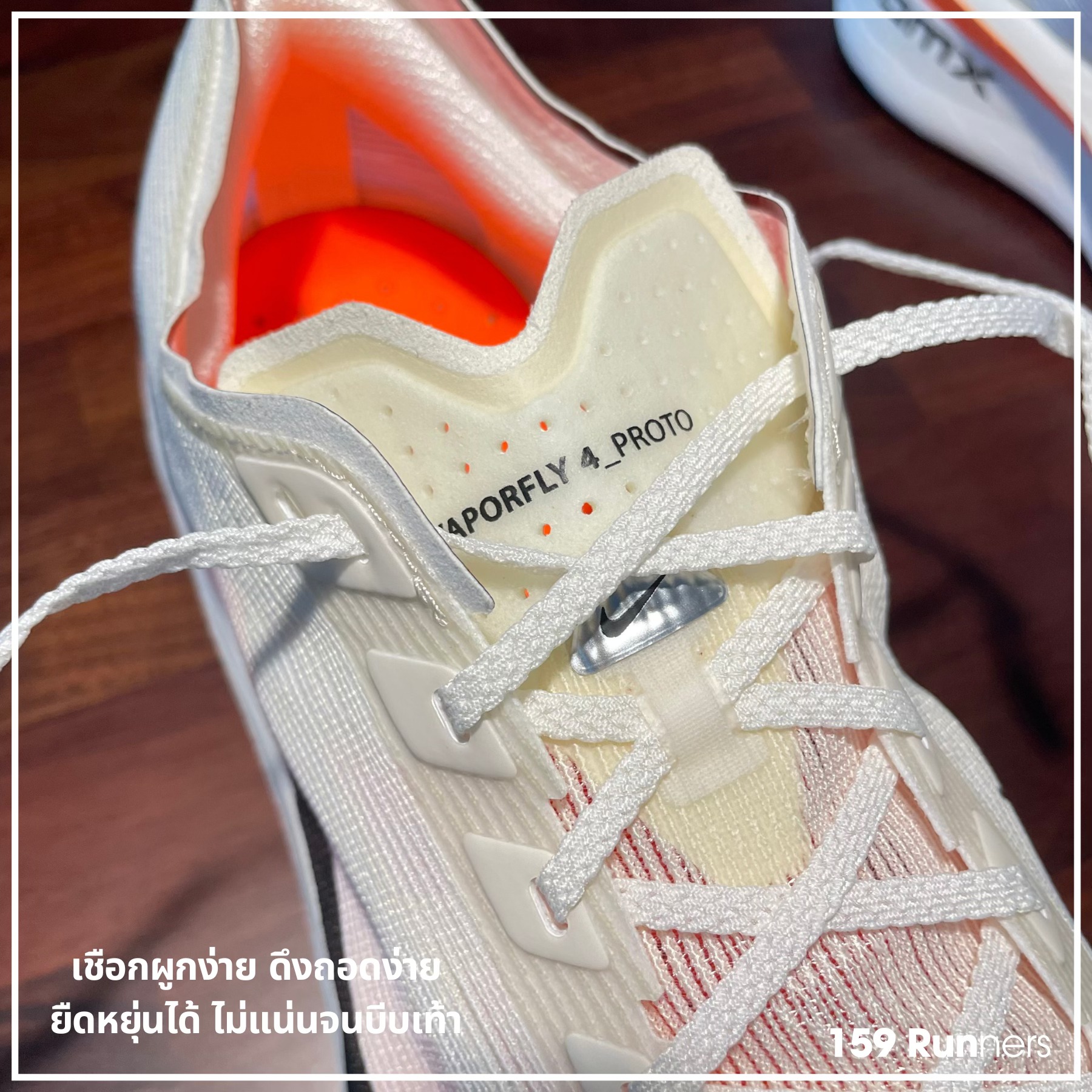
Laces:
Not your standard ridged laces—love that. They’re saw-toothed, thinner, lighter, with a slightly slick feel and a bit of stretch. They don’t overly cinch the upper and can flex with your foot. Length is perfect for a runner’s loop. Despite the slickness, they hold well thanks to the tooth-like structure. Excellent laces!
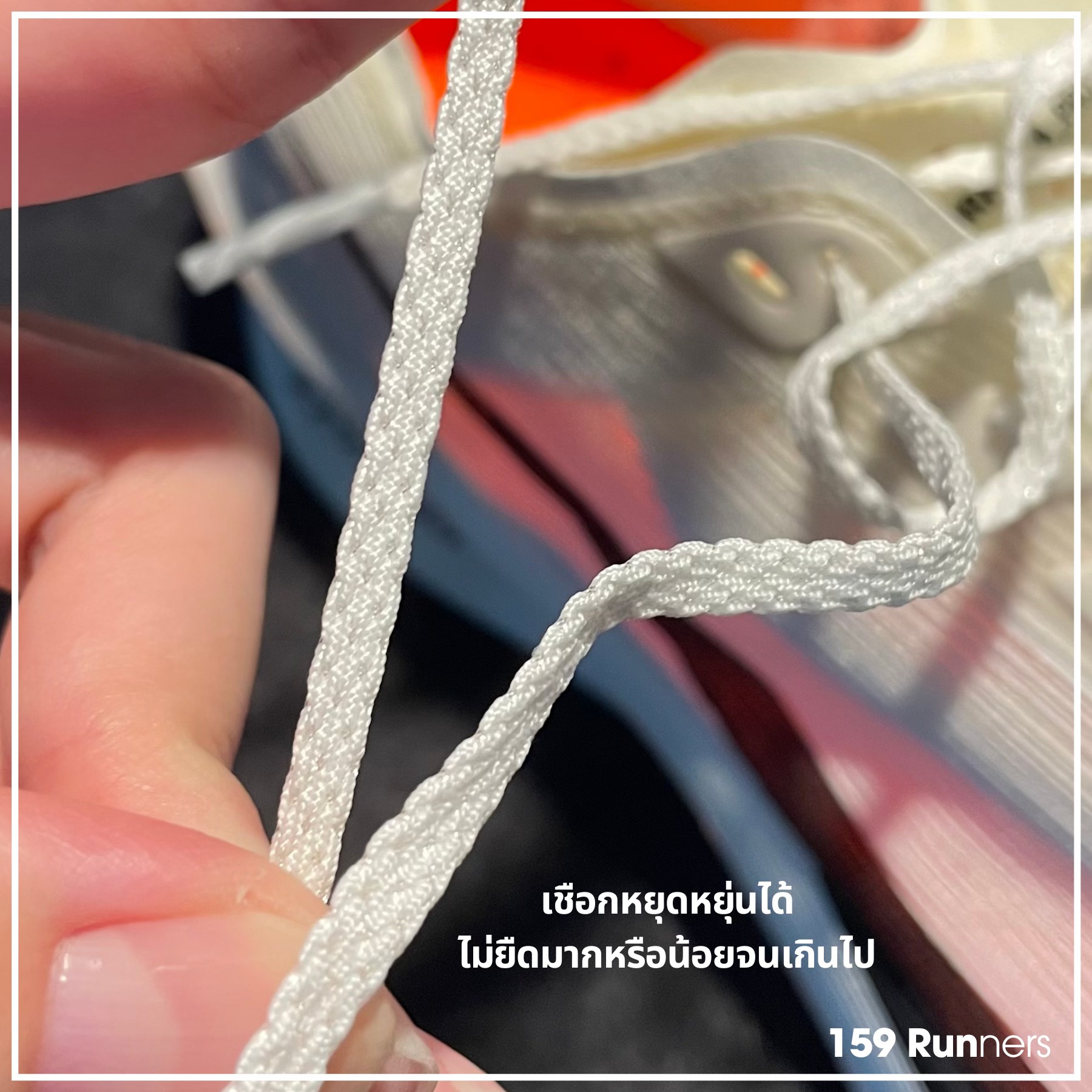
Forefoot & Midfoot:
Forefoot is still narrow like the Next% 2—not wide and roomy like the Vaporfly 3 (which felt too loose for some runners, reducing energy transfer through the ZoomX). This new fit is dialed in—Nike got it right. The midfoot base looks narrow, but it’s actually wider than any previous Vaporfly version.
Sizing:
Personally, I went with the same size as my Vaporfly Next% 2—US 9—because the forefoot on the Vaporfly 4 feels snugger and not as wide as the Vaporfly 3 (which I wore in US 8.5).
For runners with a standard foot shape (not wide), I recommend going true to size to avoid heel slippage. That also suits the Vaporfly 4’s intended use—shorter, faster races like the 10K—where a precise fit helps maximize performance.
I personally sized up by 0.5 because my forefoot is slightly wider than average, about a 2E width. If you have 2E-width feet, going up half a size is probably best. But if your feet are even wider than that, I’m honestly not sure if this shoe will work for you.

Weight:
Nike cut weight by thinning the sole and carving the midfoot. It now weighs 169g (US9 or 27cm)—about 15% lighter than the Next% 2 (195g for the same size).
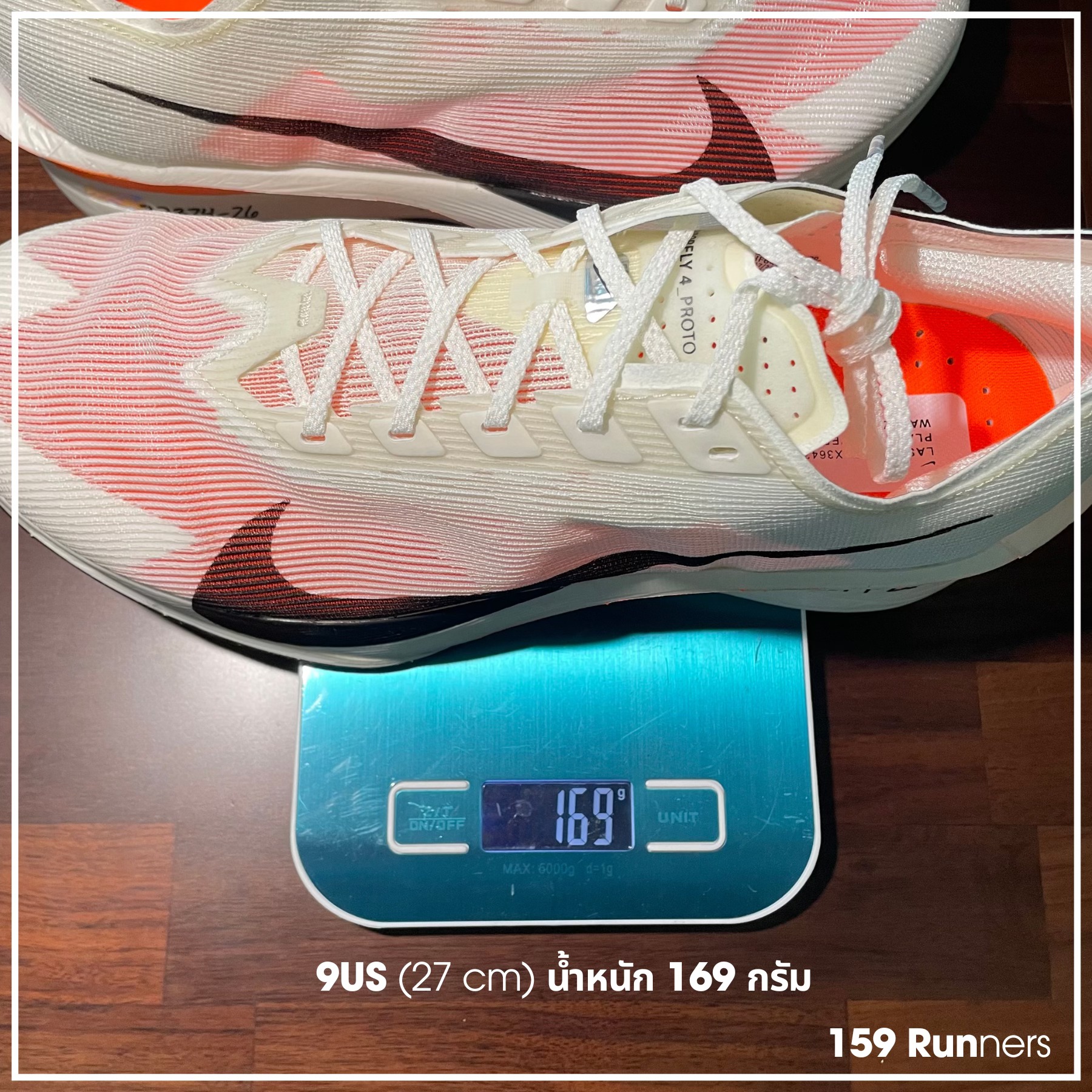
Drop & Stack:
Biggest change—lower stack and lighter. Drop is now 6mm (down from 8mm), with heel at 35mm and forefoot at 29mm. That’s lower than most marathon shoes pushing the 40mm World Athletics limit. It might not sound like a big change, but underfoot it feels noticeably different—almost flat.
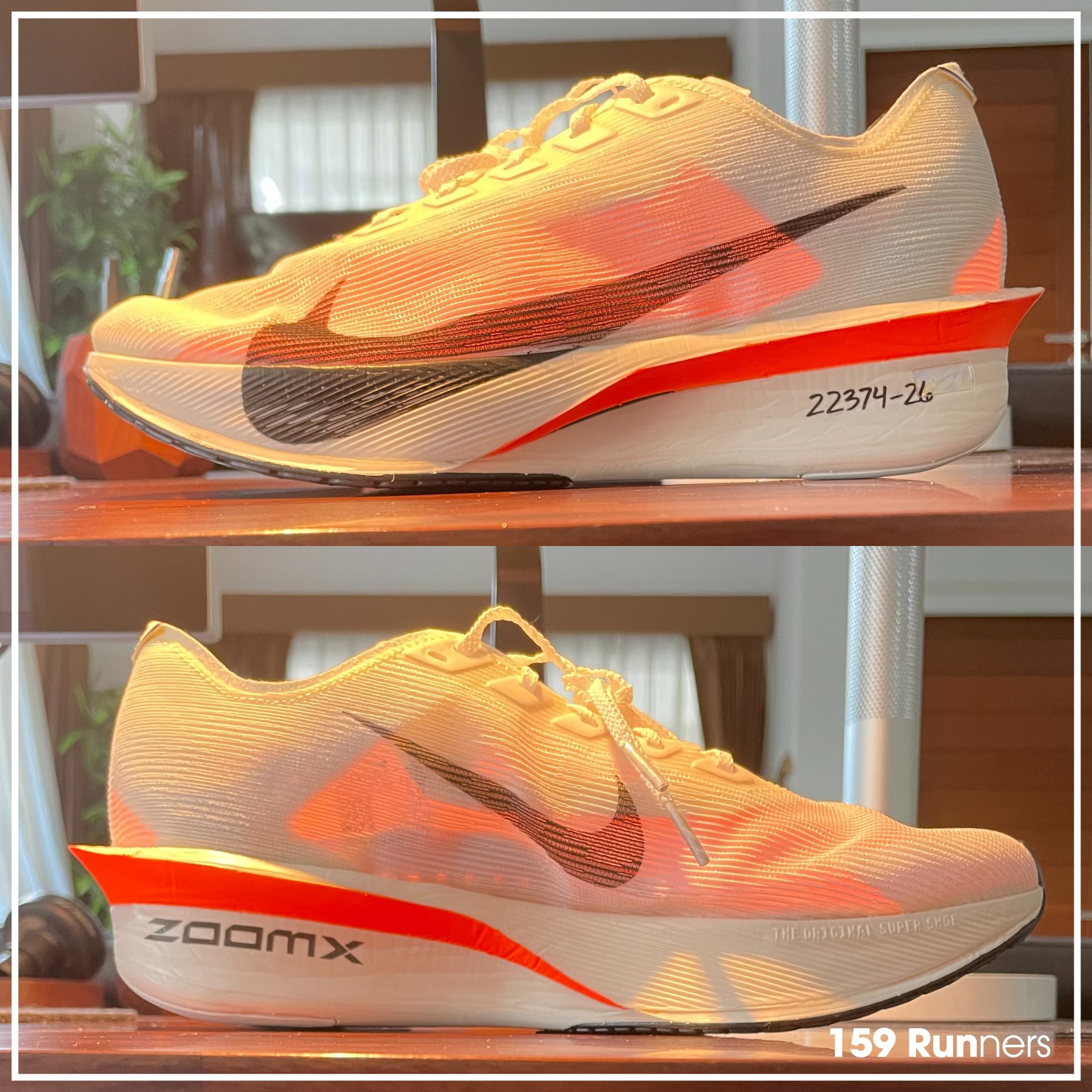
Carbon Plate:
The FlyPlate has a steeper 3° curve to enhance toe-off propulsion—but the rocker effect still feels muted in practice.
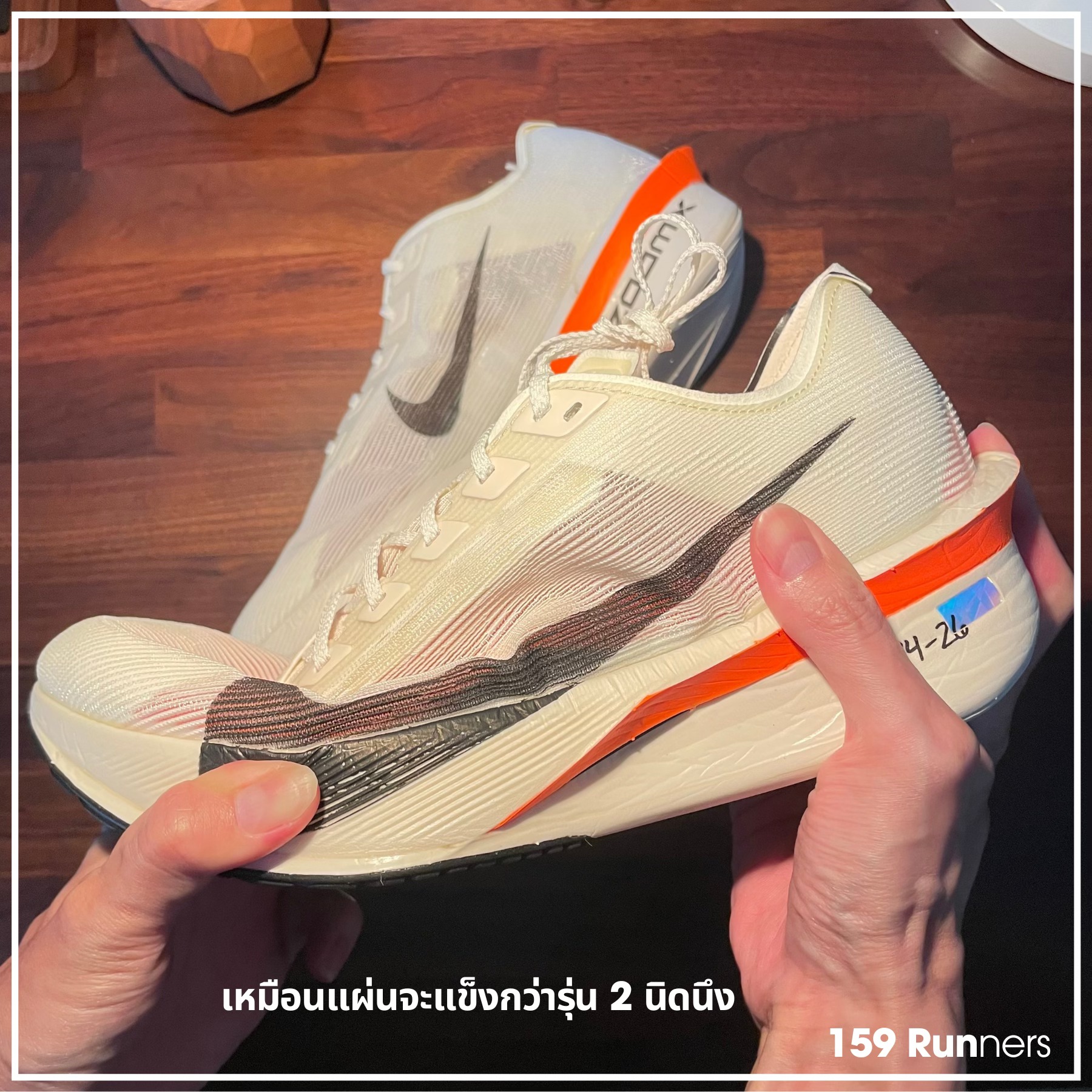
Feel & Ride
Foam & Cushioning:
Same exact foam as Alphafly 3—ZoomX that wrinkles like sausage when wet. Not durable—still prone to scuffs and tears, so handle with care.
👉🏻 In terms of softness, it’s on par with Alphafly 3. Lab-measured against Vaporfly Next% 2 (new pair), the 4 is noticeably softer—around 13.5 HA vs. 23.5 HA in the 2. (What used to feel soft in the 2 now feels firm.)
👉🏻 Side-by-side, the 4 feels smooth and soft with a firmer feel as you pick up speed. The 2 feels stiff, snappy, harsh—almost uncomfortable. (I used to get Plantar Fasciitis and Shin Splints from the 2—none of that with the 4.)
👉🏻 First impressions in slow pace: nothing crazy. No bounce, snap, or rocker sensation. Just a soft, light, fast-responding foam from reduced stack and weight.
👉🏻 At faster paces—5:00, 4:00, 3:30/km—the shoe comes alive. You get a natural ground feel with stability and smooth, firm comfort. Way more comfortable than the 2. Honestly, I can’t think of a reason why fans of the old Vaporfly wouldn’t love this—unless you need durability (which still doesn’t match the 3). If I had to race today, Vaporfly 4 is my only pick. No way I’m going back to the 2. 😂
Performance:
I rate it 9.5/10—especially for 10K.
Snappiness:
Feels less aggressive, less spring-loaded than version 2. The plate feels muted—could be the softness of the foam masking the snap. (Not saying the 2 is faster, though—only a head-to-head test would confirm.)
Rocker Feel:
Falls in the non-rocker group of carbon shoes. Doesn’t roll you forward like some others.
Breathability:
About 4.3/5. Still not as breathable as the 3 (5/5) or even the 2 (4.5/5).
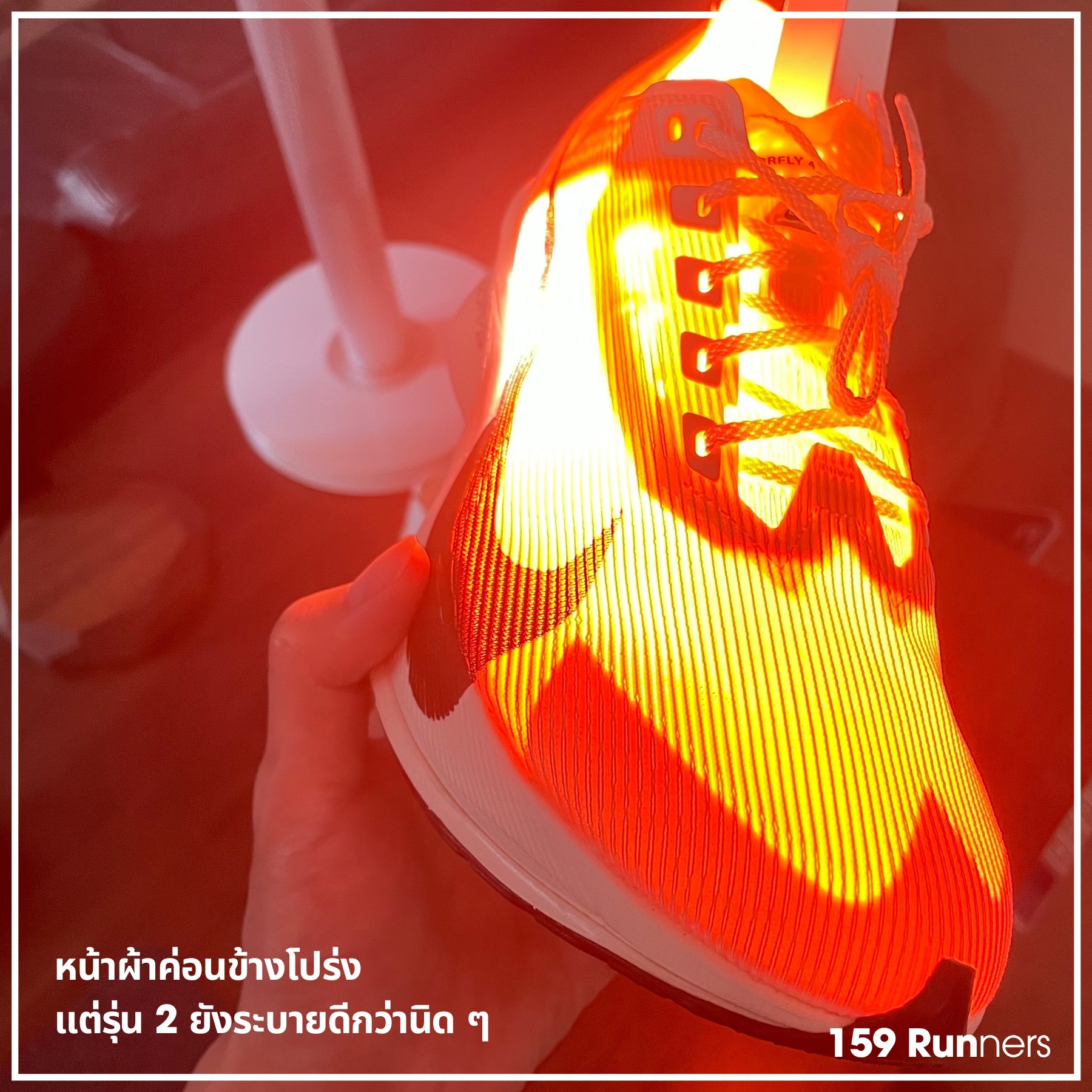
Stability:
Despite midfoot cutouts, I didn’t feel instability during zig-zag drills. Passed.
Grip:
Media reviews say the new outsole pattern grips well, even on wet roads (haven’t tested this myself yet).
Upper Durability:
Unknown, but I assume it’s on par with the 2—like most super shoes, not built to last.
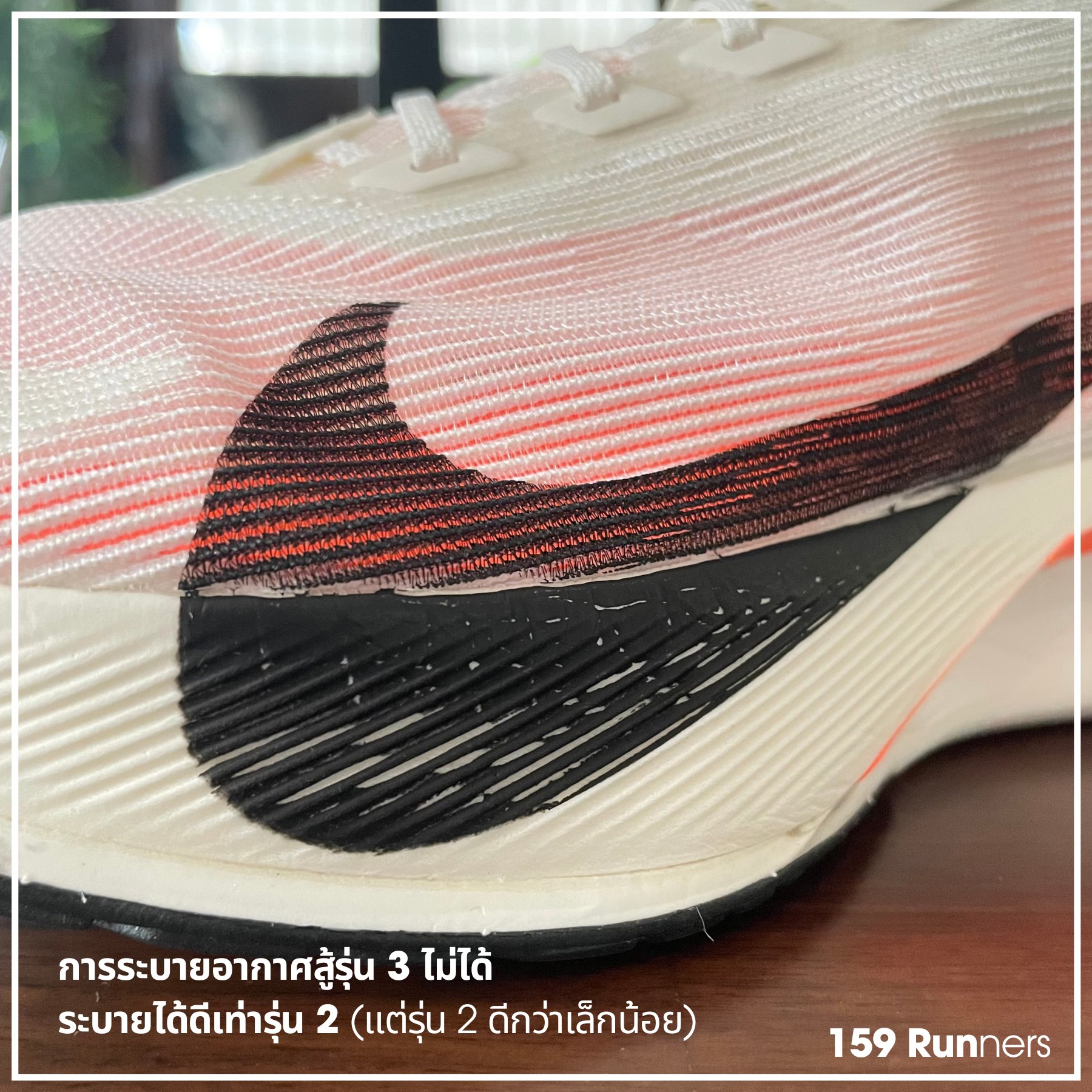
Outsole Durability:
Weak—same as Next% 1 and 2, or maybe even less. A shame Nike didn’t bring back the outsole durability from the 3.
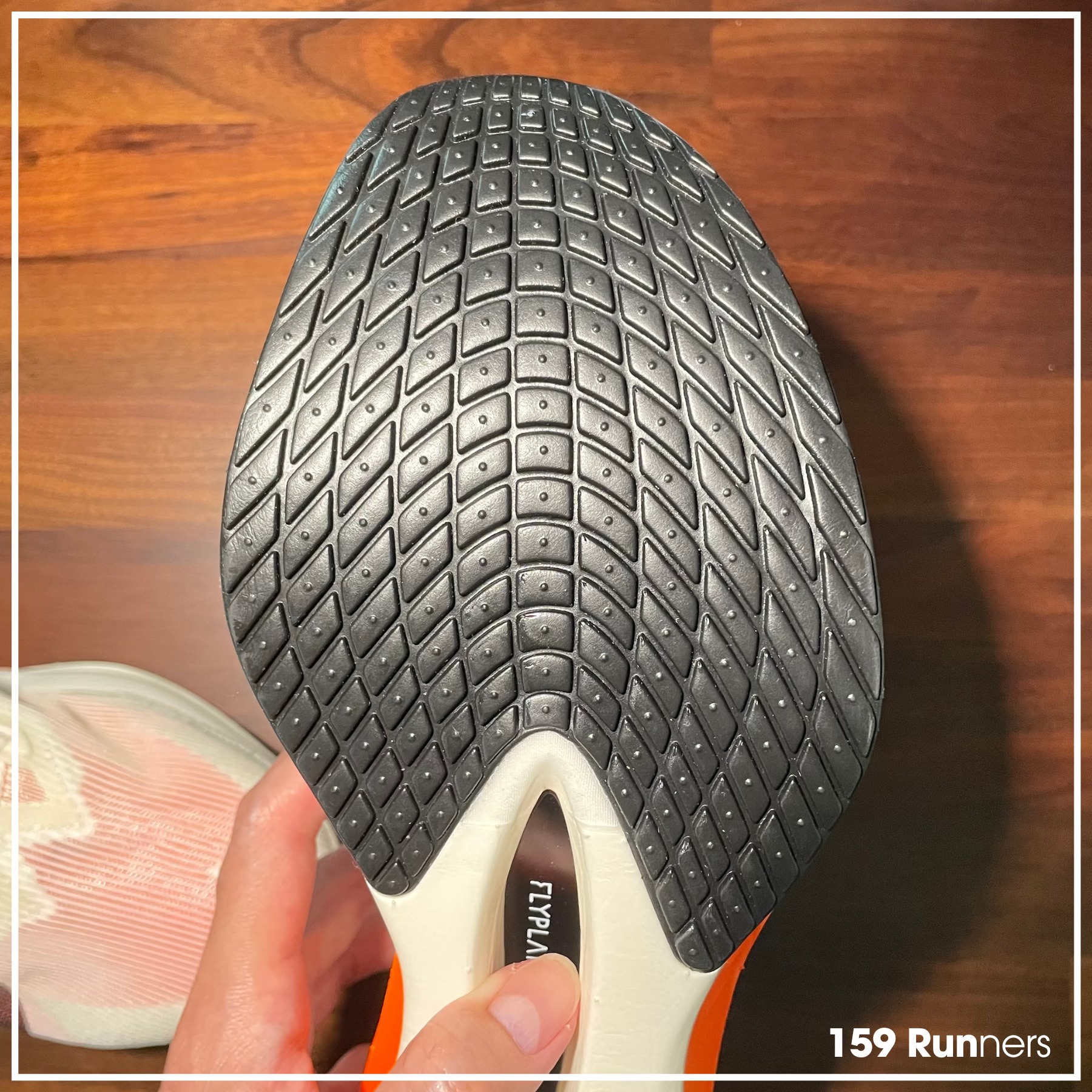
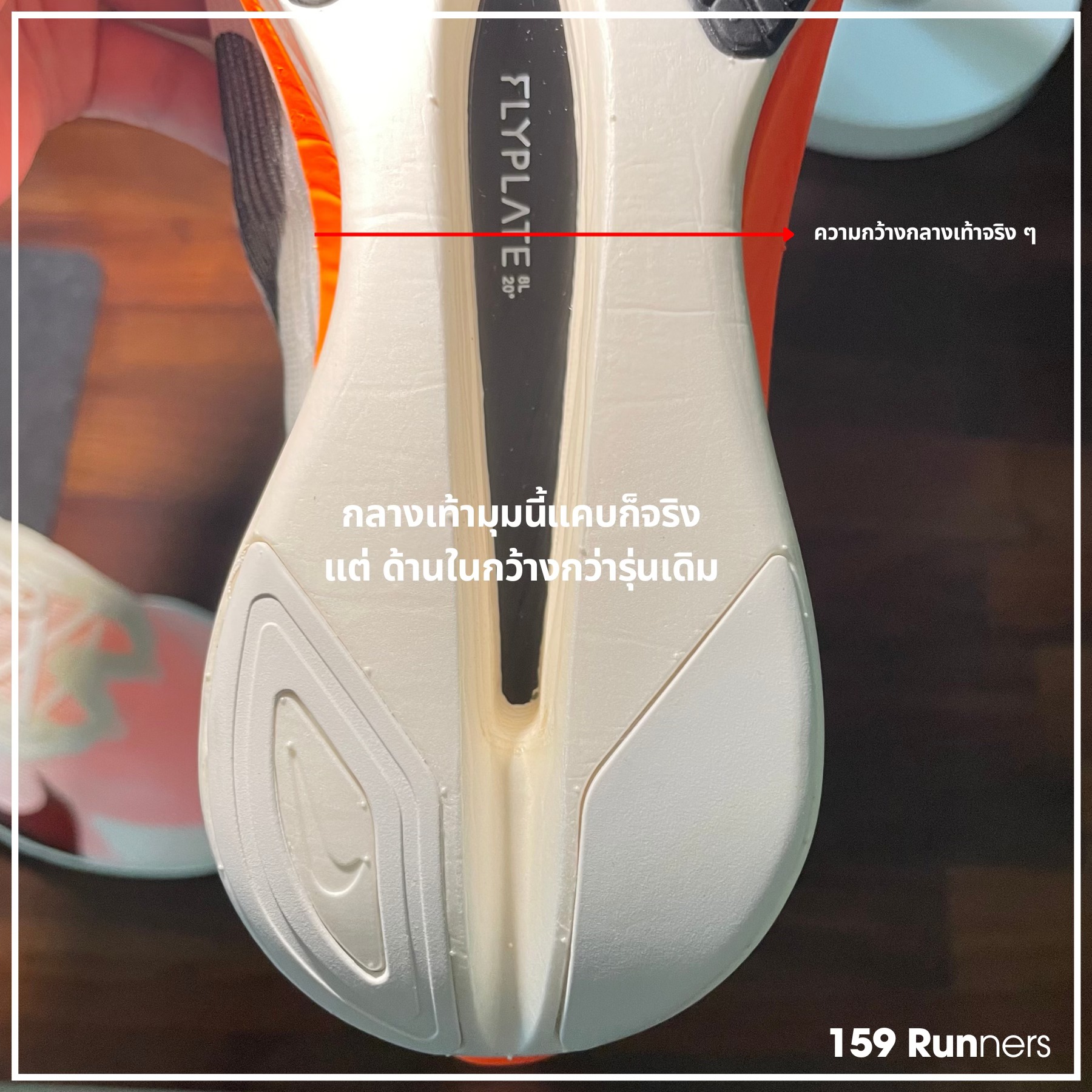
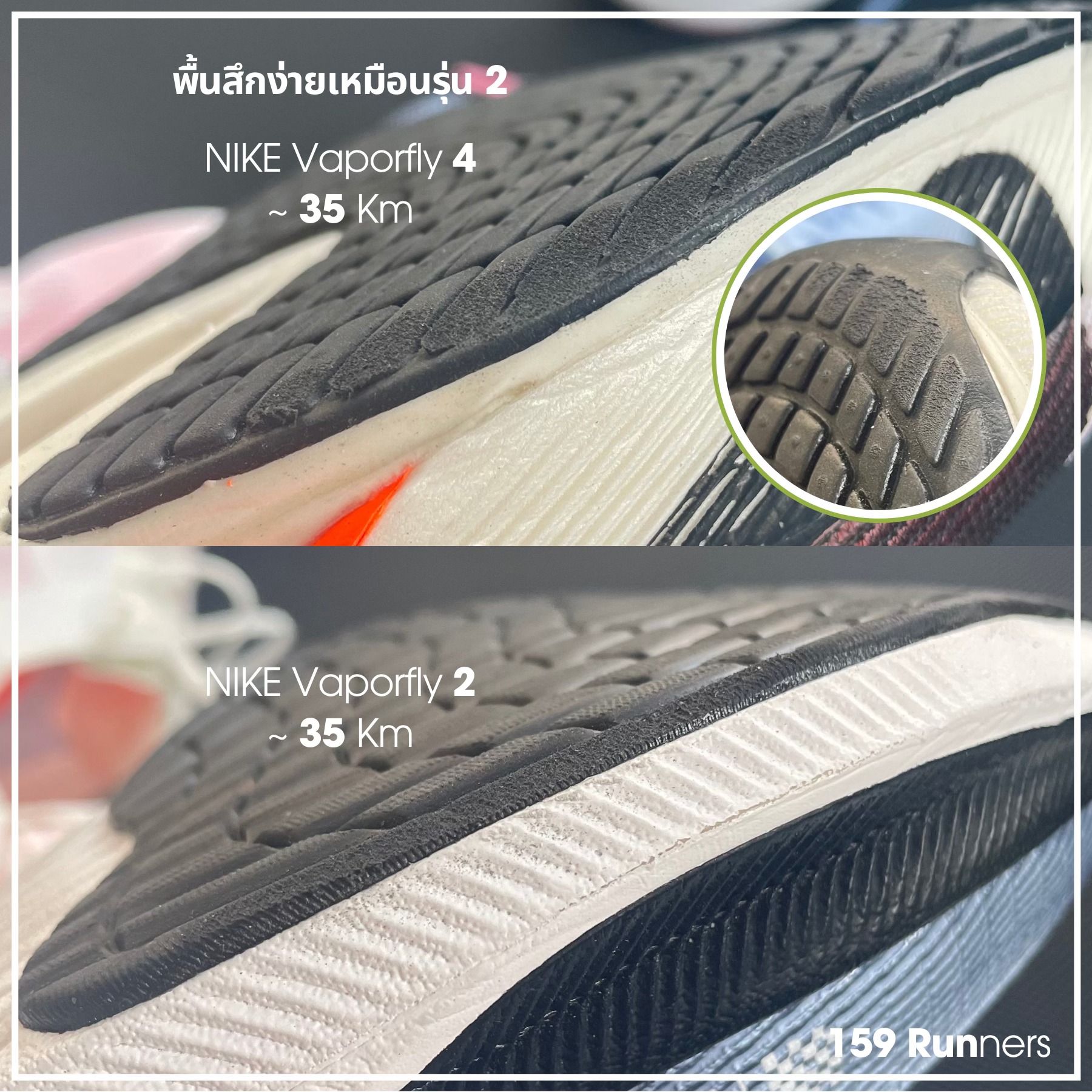
Who is NIKE Vaporfly 4 for?
- Competitive runners seeking a high-performance racing shoe for distances from 5K to 21K—especially lethal for 10K 🔥
- Runners nostalgic for the original Vaporfly 4%—this is it, but now with better performance, lighter weight, added comfort, and no more heel bite
- Runners looking for a shoe that performs on par with Vaporfly Next% 1 and 2—based on my own tests (HR, power, and other run dynamics), this one performs better (although perceived effort is about the same)
- Runners who prefer a flat-feeling shoe that gives natural ground contact while still maintaining softness and comfort underfoot
Things to Consider & Who Vaporfly 4 is not for:
- Durability is relatively low compared to other modern super shoes (about the same as Alphafly 3—or even slightly less than—Next% 1 & 2)
- Not ideal if you’re looking for a super shoe for both training and racing—mainly due to durability concerns (though it can be fine for speed work on soft tracks)
- Slight heel slippage noted—requires tight lacing with a runner’s knot to lock in the fit. Even then, minimal heel movement might still occur (minor issue, but worth noting—might just be me?)
- Not a great choice for paces in the 5:00–7:00 min/km range—in my view, Vaporfly 4 performs best at paces under 4:30/km
- Definitely not made for easy runs or long, slow mileage—this shoe was born for speed
- Might not be the best option for full marathons (better suited for 5K–21K) due to the slightly reduced stack height
- Not suitable for runners with very wide feet (wider than 2E)—will likely feel too tight up front. (2E can work with a half size up, but beyond that, you may risk heel slip or reduced performance)
- Runners looking for a smooth, rocker-style toe-off with strong forward roll—this is not the Vaporfly 4’s vibe
Performance Test
NIKE Vaporfly 4 vs Vaporfly Next% 2:
Overall, Vaporfly 4 outperforms Vaporfly Next% 2 (brand-new pairs) in HR, power output, and various run dynamics across four test runs. However, perceived effort (RPE) is nearly identical. The newer model, though, is noticeably more comfortable on foot.
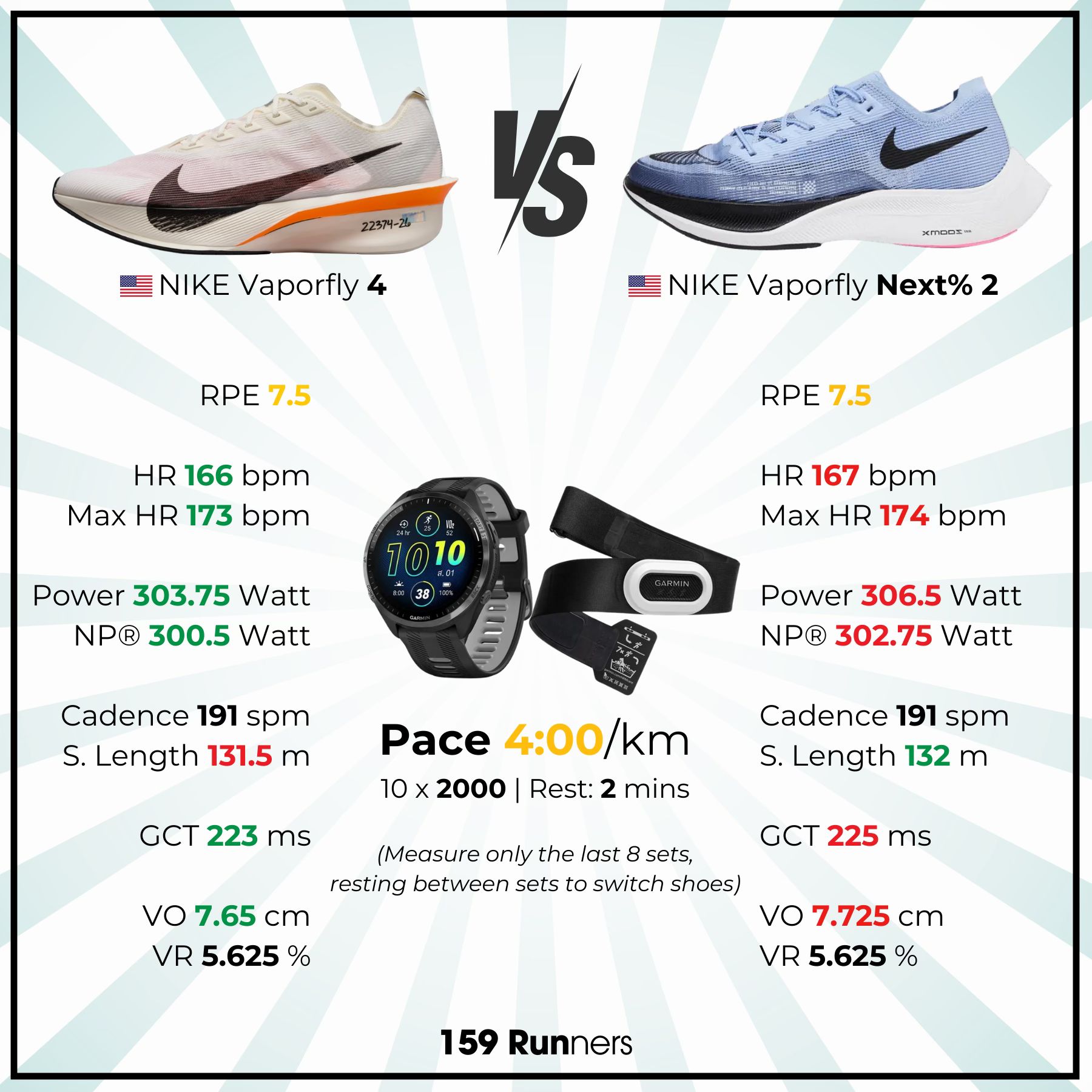
NIKE Vaporfly 4 vs ADIDAS Adios PRO 4:
After testing both shoes side by side in fast-paced runs, I personally prefer the PRO 4 for its superior comfort, smoother ride, and versatility across distances—it just feels easier to run in. The Vaporfly 4 offers better ground feel and might have a slight edge in short, fast races like the 5K, but for anything longer, especially 21K or 42K, I’d go with the PRO 4 despite its lack of breathability.
For the 10K distance, both perform exceptionally well, though if I had to pick just one, I’d still choose the PRO 4. In terms of performance metrics, VF4 has slightly better running dynamics, but PRO 4 is more energy-efficient, using about 3.5 watts less power on average, and heart rate results were nearly identical.
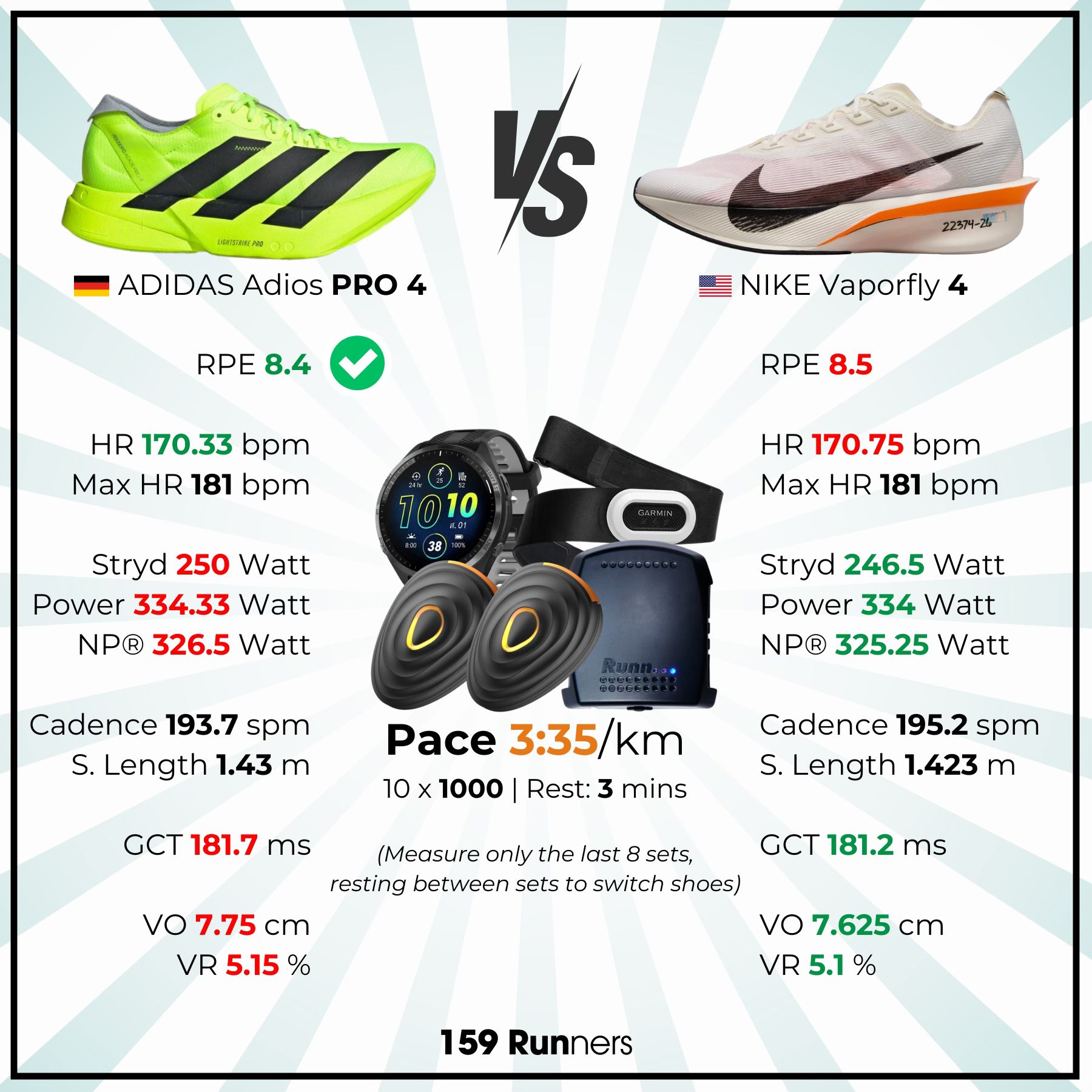
You can read the full detailed test results in the article here: ADIDAS Adios PRO 4 vs NIKE Vaporfly 4
NIKE Vaporfly 4 vs XTEP 160X 3.5 PRO:
In a pace 4:00 test comparing the NIKE Vaporfly 4 and XTEP 160X 3.5 PRO, the XTEP outperformed despite being 62g heavier. It showed lower average HR early on and maintained equal HR later, while delivering better fatigue resistance in late intervals. Subjectively, the XTEP felt more responsive, energetic, and comfortable in fatigued conditions, thanks to its aggressive rocker and firmer foam.
Although VF4 offered better running dynamics and comfort due to its lighter build, it lacked the powerful propulsion and durability of the XTEP. Overall, XTEP emerged as the stronger performer across distances from 5K to marathon.
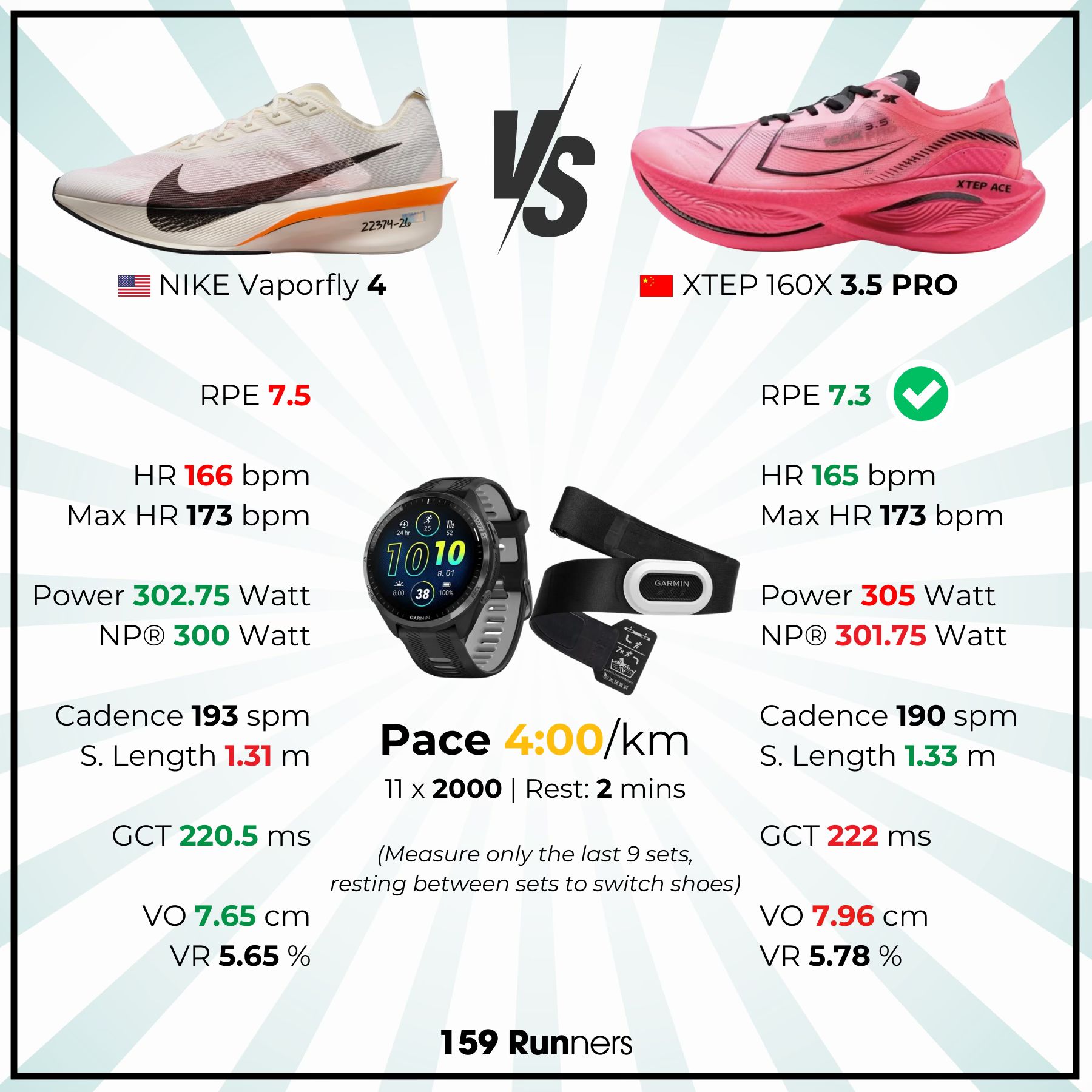
Read the full review of the XTEP 160X 3.5 PRO in this article: XTEP 160X 3.5 PRO Review
Disclosure & Testing Notes
- I personally purchased this pair from the Nike app
- Test runs totaled 40 km at pace intervals: 6:00, 5:00, 4:00, and 3:30 min/km
- Tester stats: 56 kg, 171 cm height, cadence 188–195, forefoot striker
- These results are based on personal experience—actual performance will vary depending on your pace, weight, stride length/cadence, and footstrike pattern

